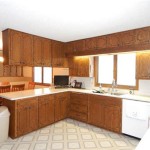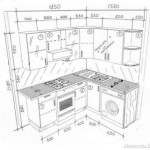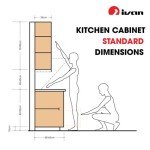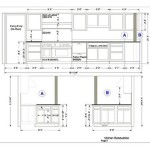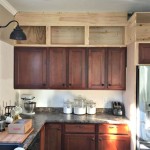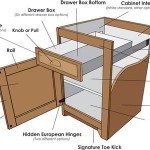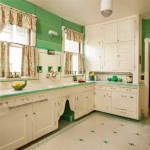Concrete Kitchen Cabinet Designs
Concrete has transitioned from its purely utilitarian applications to become a sought-after material in modern interior design. Its inherent durability, versatility, and unique aesthetic qualities make it a particularly compelling choice for kitchen cabinetry. Concrete kitchen cabinets offer a striking blend of industrial chic and contemporary elegance, capable of transforming a kitchen into a visually stunning and highly functional space.
One of the significant advantages of concrete cabinets is their inherent customization potential. Unlike pre-fabricated options, concrete can be molded into virtually any shape or size, allowing for bespoke designs tailored to specific kitchen layouts and individual preferences. This flexibility extends to the incorporation of integrated sinks, drainboards, and other functional elements seamlessly within the countertop and cabinet structure.
Concrete's versatility also extends to its finish. While the classic gray hue remains a popular choice, concrete can be pigmented to achieve a wide range of colors, from subtle earth tones to vibrant, bold shades. Additionally, various texturing techniques can be applied, creating surfaces ranging from smooth and polished to rough and textured, further enhancing the design possibilities.
Durability is a cornerstone of concrete's appeal. Concrete cabinets are exceptionally resistant to scratches, heat, and stains, making them ideally suited for the rigors of a busy kitchen environment. With proper sealing, concrete surfaces become impervious to moisture, further enhancing their longevity and resistance to wear and tear.
The integration of concrete into kitchen design allows for a seamless transition between countertops and cabinetry. A continuous concrete surface can be created, eliminating grout lines and creating a streamlined, modern aesthetic. This unified design not only enhances visual appeal but also simplifies cleaning and maintenance.
Concrete cabinets can be designed to complement a variety of kitchen styles. In minimalist or industrial settings, the raw, unfinished look of concrete can be a striking focal point. Conversely, polished and pigmented concrete can lend a touch of sophistication to more traditional or contemporary kitchens. The material's neutral nature allows it to pair well with various other materials, such as wood, stainless steel, and glass, creating a balanced and harmonious design.
The thermal mass of concrete can contribute to energy efficiency in the kitchen. Concrete absorbs and retains heat, helping to regulate the temperature of the space. This can be particularly beneficial in warmer climates, where concrete can help to keep the kitchen cool.
While concrete offers numerous advantages, it is essential to consider its limitations. Concrete is a heavy material, requiring robust framing and support structures. Installation can be more complex than traditional cabinetry and often requires specialized expertise. Furthermore, concrete can be susceptible to cracking if not properly reinforced and installed.
The cost of concrete cabinets can be higher than other materials, reflecting the specialized craftsmanship and materials involved. However, the long-term durability and unique aesthetic qualities of concrete can make it a worthwhile investment for those seeking a truly distinctive and enduring kitchen design.
Maintenance of concrete countertops and cabinets is relatively straightforward. Regular cleaning with a mild soap and water solution is typically sufficient. Periodic sealing is recommended to maintain the concrete's resistance to staining and moisture. Avoid using abrasive cleaners or harsh chemicals, as these can damage the surface.
Sustainability is another factor to consider. Concrete is a readily available and locally sourced material in many regions, reducing transportation costs and environmental impact. Furthermore, concrete is highly recyclable, contributing to its overall sustainability profile.
When considering concrete kitchen cabinets, it's crucial to consult with experienced professionals. Experienced concrete contractors can provide guidance on design, material selection, and installation, ensuring a successful and satisfying outcome. They can also address any concerns regarding structural requirements, weight considerations, and maintenance procedures.
The design possibilities with concrete are virtually limitless, allowing for the creation of truly unique and personalized kitchen spaces. Whether seeking a sleek, modern aesthetic or a more rustic, industrial look, concrete cabinets offer a versatile and enduring solution for those seeking a kitchen that is both beautiful and functional.
The incorporation of concrete elements, such as integrated sinks and drainboards, can further enhance the functionality and visual appeal of the kitchen. These seamless integrations create a cohesive and streamlined design, minimizing cleaning and maintenance requirements.
Concrete's inherent strength and durability make it a practical choice for high-traffic areas like the kitchen. Its resistance to scratches, heat, and stains ensures that the cabinets will maintain their appearance and functionality for years to come.
By carefully considering the design, installation, and maintenance aspects, homeowners can harness the unique qualities of concrete to create a kitchen that reflects their individual style and meets their practical needs.

120 Best Concrete Kitchen Ideas Design Inspirations

30 Great Examples Of Concrete Kitchens

Cement Effect Modern Kitchens A Furnishing Trend For An Original And Sophisticated Home Italian Design Furniture From Italy Coch Italia Leather Sofas Il Piccolo

57 Concrete Kitchen Countertop Ideas Digsdigs

Concrete Kitchen Design Decoholic

40 Amazing And Stylish Kitchens With Concrete Countertops

Advantages Of Concrete As A Kitchen Countertop Material

Concrete In The Kitchen 16 Original Interiors With Inspirations

30 Great Examples Of Concrete Kitchens

Concrete Kitchens Gallery Kitchen Design Halifax Cheshire London

